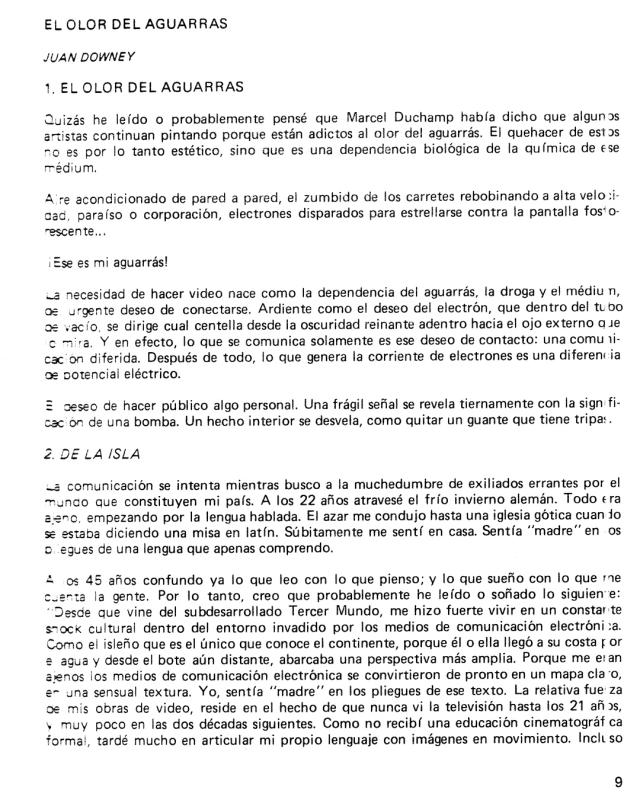Diamela Eltit (b. 1949) wrote “Madre Patria” for the catalogue that was produced for the one-man exhibition of works by Juan Downey (1940–1993), the Chilean artist who lived in the United States. Festival Downey: Video porque Te Ve was shown at the Galería Visuala (Santiago, 1987). The catalogue included essays written by the artist, the art critic Justo Pastor Mellado (b. 1949), the North American curator Anne Hoy, Patricio Marchant (1939–1990), the anthropologist Pedro Mege, the North American anthropologist Eric Michaels (1948–1988), the Chilean video artist Néstor Olhagaray (1946–2020), the researcher José Pérez de Arce (b. 1950), and the Chilean archaeologist based in the United States, Constantino Torres. The diversity of approaches taken by these contributors reflects the broad range of Downey’s work; according to Hal Foster, it was Downey who embodied the idea of the “ethnographer artist” (1996). [See the following texts from the catalogue in the ICAA Digital Archive: “El misterio de la Gran Pirámide” (doc. no. 735702) by Mellado; “Juan Downey y el video espejo” (doc. no. 735687">735687) by Pérez de Arce; and “Video arte y autobiografía” (doc. no. 735821) by Marchant.]
Downey was a foreigner in his own country, and it showed in his work. After graduating with a degree in architecture, at 22 years of age, he left Chile and went to Germany, then studied painting in Spain, then went to France. Finally, in the mid-1960s, he settled in the United States, though he never stopped traveling the world. He remained in close touch with Chile and, according to Eltit, he became obsessed with his homeland. His experimental work with video, which brought him international acclaim, explored subjects such as ecology, the extractive economy, mass culture, and multiculturism, among other fields. “The journey” of self-discovery and technological explorations were also constants in his work. In 1961, before leaving Chile, he organized a couple of solo exhibitions, but did not show his work in his homeland again until the mid-1980s. In 1984 he showed drawings, prints, and videos at the Galería Plástica 3 and, in 1987, Festival Downey: Video porque Te Ve. In his catalogue essay he wrote about his life and work, discussing the thoughts and questions he explored in his work over the years. [See “El olor del aguarrás” (doc. no. 735687">735687).]


